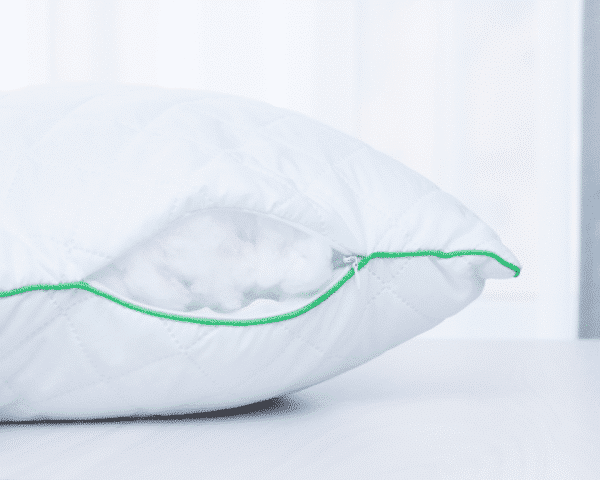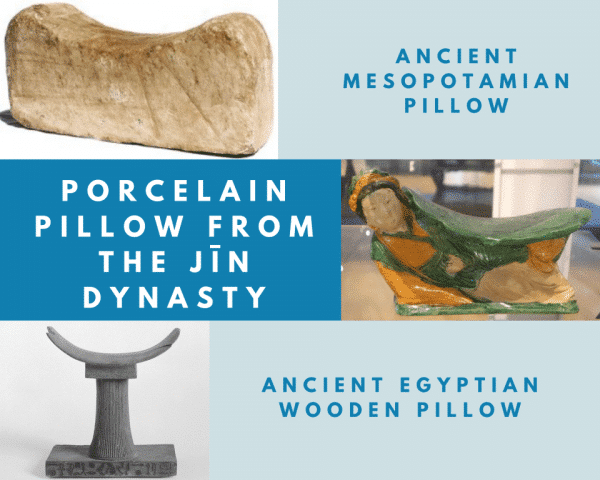WHAT'S IN A PILLOW?
FACTS, HISTORY AND MYTHS
The Daily Doze
Interesting Pillow Facts & Myths
- The first pillows were hard!
They were not designed for comfort, and only the absolutely wealthy had them. Learn more about their varied purposes within different cultures in the history timeline below. - Pillows only became everyday household items during the Industrial Revolution of the 1800’s.
They could be easily mass-produced by large textile factories and thus became affordable to the masses. Humanity went a long time without pillows before this, but we’re glad we missed it! - Think you are the only one using your pillow? Wrong!
Your pillow is a favorite hiding place of dust mites and other microscopic insects that live on our skin and hair. It is important to change bedding regularly, and many pillows can actually be thrown in the washer. Read care instructions carefully and follow accordingly. - Your pillow can cause your allergies!
Choose a hypoallergenic pillow to avoid nighttime allergies, and clean it regularly, as most allergens and dust mites settle over time. If you suspect dust mites in your pillow, symptoms to look for include stuffy or runny nose, watery eyes, dry cough, and bedtime triggers for illnesses such as asthma, sinusitis or rhinitis. - Pillows have a definite lifespan!
Depending on the type of material, the life of your pillow varies from 6 months to several years. For example, memory foam pillows should be replaced every 18 to 36 months, whereas latex pillows can last up to 3 or 4 years. Know when it’s time to say goodbye instead of goodnight. - 8% of the male population admits to never having changed or washed their pillows!
if you’re one of them, maybe now is a good time to give your pillow its first wash. We’ll still be here when you get back from the laundry room. - A pillow gets heavier as you use it, due to the buildup of sweat, dirt, oils, dust mites, mold and dead skin cells.
It’s worth reiterating the importance of washing your pillows and tossing them out once they’ve given you their best years.

History of Pillows: A Timeline
Pillows are synonymous with comfort and relaxation. They are a cushion for the head and neck, providing support for a good night’s sleep. Finding the perfect pillow can be hard, even with the wide array of options out in the market today.
But can you imagine how difficult it was for people in the past?
Throughout history, pillows have evolved nearly as much as mattresses have! They weren’t always the soft headrest they are today. Check out how much they have changed over the years.

7000 BCE | Mesopotamia
During this time, pillows were made of stone. Clearly, comfort was not a priority! The main purpose was to elevate the heads of wealthier citizens to help keep bugs away from their ears, mouths and noses at night.
2000 BCE | Egypt
Ancient Egyptian pillows were commonly made of marble, ivory, stone, wood or ceramic. People would carve images of gods into them and place the pillows under the heads of the deceased to keep bad spirits away.
600 AD | China, Greece & Rome
China crafted their pillows similarly, using hard materials such as porcelain, jade, stone, bronze, bamboo or wood, and ornately designing them with pictures of humans, animals and plants. Today, these ancient pillows are highly sought-after by collectors because of their beautiful and elaborate designs.
It’s believed these materials were used for their health benefits. For example, jade was said to increase intelligence. While the Chinese were capable of making softer pillows, they believed those stole energy from the user. Hard pillows were encouraged, for one’s health and intellect.

Similar to the Chinese, the Japanese Geisha also kept their necks raised on hard surfaces. This ensured their hair remained perfectly coiffed. As part of their training, they would surround their heads with rice at night so that if they fell off the sleeping block, rice would stick to their hair as a consequence.
The Ancient Greeks and Romans had a better understanding of the value of comfort, and stuffed their cloth pillows with straw, reeds, fabric or cotton. The wealthy used feathers. These were the fore-feathers(!) of the types of pillows we use today.
11th Century | Middle Ages
In this time of European population growth and development, pillows were a status symbol that could only be afforded by the affluent.
13th Century | Pillows became illegal
King Henry VIII banned pillows, to be used only by pregnant women -- and, of course, the King himself.
16th Century | Pillows for the people
By the 1500s, pillows became more widespread and could be found in common households.
19th Century | Industrial Revolution
By this time, nearly everyone in Europe & America had a pillow to rest their heads on after a hard day’s work.
20th Century | Modern Fluff
Pillow technologies continue to evolve today, and there is a wide variety to choose from, including gel pillows, travel pillows, throw pillows, boyfriend pillows, and more. There are different kinds of pillows to suit each individual’s needs, styles and symptoms!

When you lay your head on your pillow tonight, be grateful for a plush surface instead of a hard stone. It took humanity a while to get here, but now we know the importance of a comfortable pillow for a good night’s sleep.
If you want to understand your sleep even better, our Majestic Beds Team is here to help! Feel free to contact us to speak with our Sleep Experts. We can help you find the best sleep solution for your needs.
Sign Up for Exclusives and Updates
Invest in rest. A better sleep means a better life. To get the latest information on sleep science and other interesting info, click below to get notified about new blog updates!
